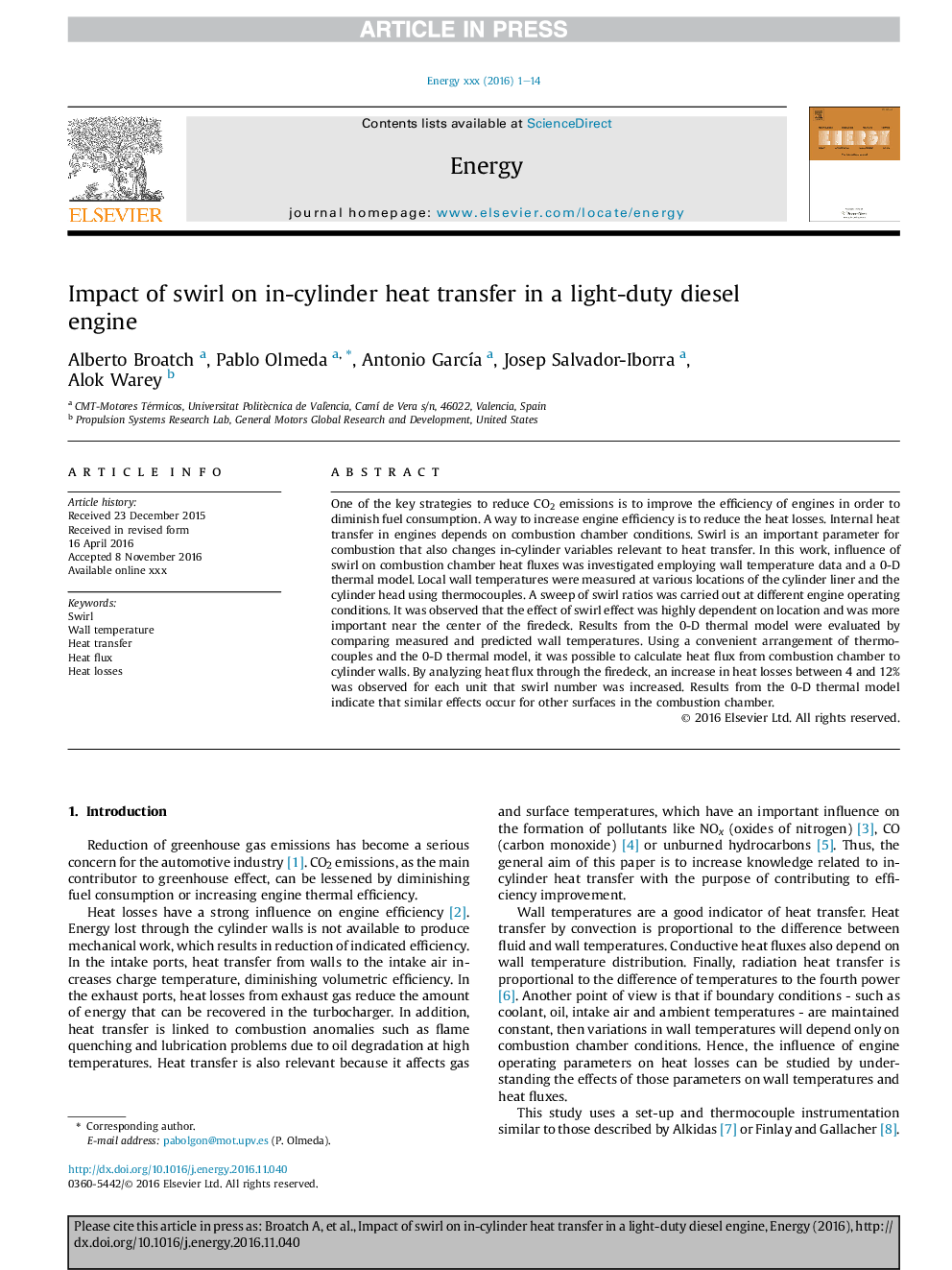| Article ID | Journal | Published Year | Pages | File Type |
|---|---|---|---|---|
| 5476942 | Energy | 2017 | 14 Pages |
Abstract
One of the key strategies to reduce CO2 emissions is to improve the efficiency of engines in order to diminish fuel consumption. A way to increase engine efficiency is to reduce the heat losses. Internal heat transfer in engines depends on combustion chamber conditions. Swirl is an important parameter for combustion that also changes in-cylinder variables relevant to heat transfer. In this work, influence of swirl on combustion chamber heat fluxes was investigated employing wall temperature data and a 0-D thermal model. Local wall temperatures were measured at various locations of the cylinder liner and the cylinder head using thermocouples. A sweep of swirl ratios was carried out at different engine operating conditions. It was observed that the effect of swirl effect was highly dependent on location and was more important near the center of the firedeck. Results from the 0-D thermal model were evaluated by comparing measured and predicted wall temperatures. Using a convenient arrangement of thermocouples and the 0-D thermal model, it was possible to calculate heat flux from combustion chamber to cylinder walls. By analyzing heat flux through the firedeck, an increase in heat losses between 4 and 12% was observed for each unit that swirl number was increased. Results from the 0-D thermal model indicate that similar effects occur for other surfaces in the combustion chamber.
Related Topics
Physical Sciences and Engineering
Energy
Energy (General)
Authors
Alberto Broatch, Pablo Olmeda, Antonio GarcÃa, Josep Salvador-Iborra, Alok Warey,
